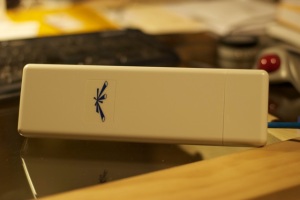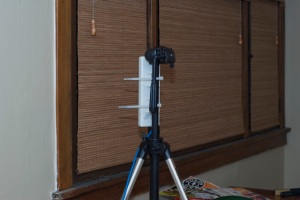NanoStation | Ubiquiti Networks, Inc.
I’m scheduled to give a summary talk on the state of cryptographic attacks on WiFi for the University of Utah GSAC colloquium. I wanted to be able to demonstrate the practicality of these attacks, so I needed a platform to launch attacks from.
To this end, I picked up a Ubiquiti NanoStation 2 from Metrix. Today’s post is a bit of a how-to for getting the unit up and running with OpenWRT.
Background
OpenWRT is a framework for building a Linux distribution for use in routers and other embedded computers. Building a Linux distribution for an embedded computer is generally very difficult; OpenWRT’s main contribution is that it makes the process significantly easier. At the time of writing, the latest version of OpenWRT is Kamikaze.
Where’s a brief overview of the steps for getting OpenWRT onto the NanoStation 2, and how much work they are:
- Update the firmware on the NanoStation
- Download the OpenWRT trunk and packages (two commands)
- Setup the build environment (one command)
- Select which packages you want for your distribution (one command, a bit of menus)
- Compile (one command and some patience)
- Upload to device (one command)
So now a bit about the NanoStation 2. Seattle Wireless has a good summary of the hardware specifications. I’ll speak about the device qualitatively:
First, this is a device with excellent range with the built-in antenna. I don’t have an external antenna for the unit; in my experience, the unit performs great on its own. I’ve been using it to do analysis, and have found that it sees much more than my laptop (which is why I bought the unit, after all).
Second, the device is powered exclusively by its Ethernet connection. I don’t own any switches that can provide power over Ethernet; however, the unit comes with an adapter that puts power on the line. I’ve never used a PoE device before, but I can tell that I’ll want more. This is a very nice feature, especially for practical use outdoors.
Third, this device is hard to brick. I’m generally nervous about flashing devices with unofficial images. While I obviously can’t claim that this device is brick-proof, I can say that it seems resilient. On more than one occasion I’ve messed up my OpenWRT installation, and was able to recover by returning to the official firmware. I’ll describe this process in a bit.
Fourth, it’s a small machine that mounts with zip-ties. Zip ties! I love it.
The Ultimate CPE for the Global WISP Community
NanoStation packs some phenomenal performance with a revolutionary design combining a hi-gain 4 antenna system, advanced radio architecture, and highly researched and developed firmware technology allowing throughput, stability, and capacity performance rivaling even the highest-end WiMax networks. All at a MSRP of $79.NanoStation has been proven in extreme temperature and weather conditions. Additionally, it has advanced ESD/EMP immunity design to protect against common outdoor radio and ethernet failures and eliminate truck-rolls for carriers.
Processor Specs
Atheros AR2315 SOC, MIPS 4KC, 180MHz
Memory Information
16MB SDRAM, 4MB Flash
Networking Interface
1 X 10/100 BASE-TX (Cat. 5, RJ-45) Ethernet Interface
Approvals
FCC Part 15.247, IC RS210
RoHS Compliance
Antenna
Integrated antenna array + External RP-SMA
Power Supply
12V, 1A (12 Watts). Supply and injector included
Power Method
Passive Power over Ethernet (pairs 4,5+; 7,8 return)
Operating Temperature
-20C to +70C (System PCB optimized for hi-temp)
Weight
0.4 kg
AP/Cliente que permite ser Access Point o Cliente Bridge y que tiene como microprocesador un Atheros AR2316 SOC, MIPS 4KC, 180MHz con 16MB SDRam y 4Mb de Flash. Tiene como potencia 26dBm (400 mW) y una sensibilidad de -97dBm. Trae alimentación via Passive Power over Ethernet (pairs 4,5+; 7,8 return). Tiene una antena integrada de 10dBi con dual polarización, se han realizados pruebas que dan hasta 25mbps. Es un equipo revolucionario que marcará la tendencia sin duda. Muy facil de instalar y programar, funcionamiento estable, inmunidad a ruidos e interferencias superio a otros equipos que he probado. Muy recomendable y el precio razonable teniendo en cuenta que esta preparado para exteriores y trae antena integrada.





 LibreOffice
LibreOffice Firefox
Firefox
No comments:
Post a Comment